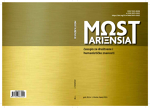VITALNA STATISTIKA PODIJELJENOGA DRUŠTVA – SLUČAJ BOSNA I HERCEGOVINA (2013. – 2022.)
VITAL STATISTICS OF A DIVIDED SOCIETY – THE CASE OF BOSNIA AND HERZEGOVINA (2013 – 2022)
Author(s): Martina Miljak, Mirjana MilićevićSubject(s): Constitutional Law, Politics and society, Demography and human biology, Sociology of Culture, Sociology of Politics
Published by: Sveučilište u Mostaru i Institut društvenih znanosti Ivo Pilar, Zagreb
Keywords: Bosnia and Herzegovina; population; population census; vital statistics; constituent nations;
Summary/Abstract: The society of Bosnia and Herzegovina is characterized by a unique mosaic of ethnic identities and multiculturalism resulting from the complex history and rich cultural heritage of the peoples living on the soil of Bosnia and Herzegovina. The same characteristics that make up a unique social mosaic are the basis of deep divisions at all social and political levels, which consequently prevent the development and progress of the state. At the same time, extremely unfavorable demographic trends, negative natural change above all, population aging, emigration and, consequently, the reduction of the contingent of the population in working and reproductive age determine the general development of the country and additionally shape the social and economic picture of the country. Analysis of vital statistics data for the period after the last population census (2013) indicates a demographic decrease in all constituent nations. Data on the natural movement of the population according to the nationality of the mother of a live-born child, or the nationality of a death population, indicate that the natural change is negative in all three constituent nations in the period from 2013 to 2022. The absence of a population census after 2013 makes it difficult to see the state of society and create the development plans. The deep divisions of the post-war Bosnian society, the administrative-territorial division of the state into two entities and one district, the politicization of all segments of social life and the lack of consensus between state bodies represent an obstacle to the organization of a new population census, which is necessary as a basis for identifying the needs and planning the development strategies of the state.
Journal: Mostariensia - časopis za društvene i humanističke znanosti
- Issue Year: 28/2024
- Issue No: 1
- Page Range: 73-105
- Page Count: 33
- Language: Croatian

